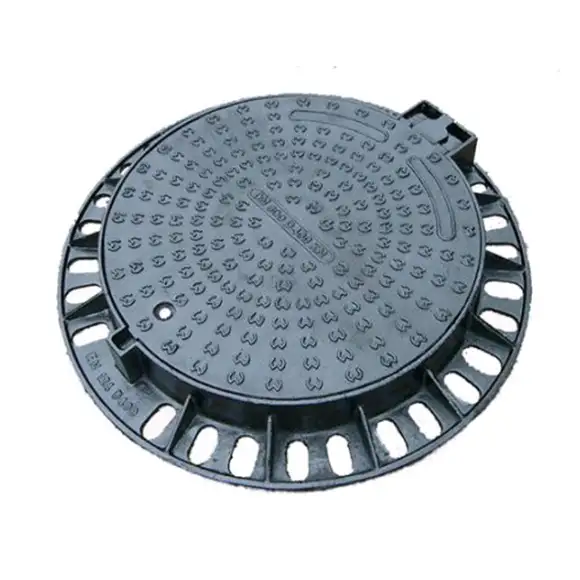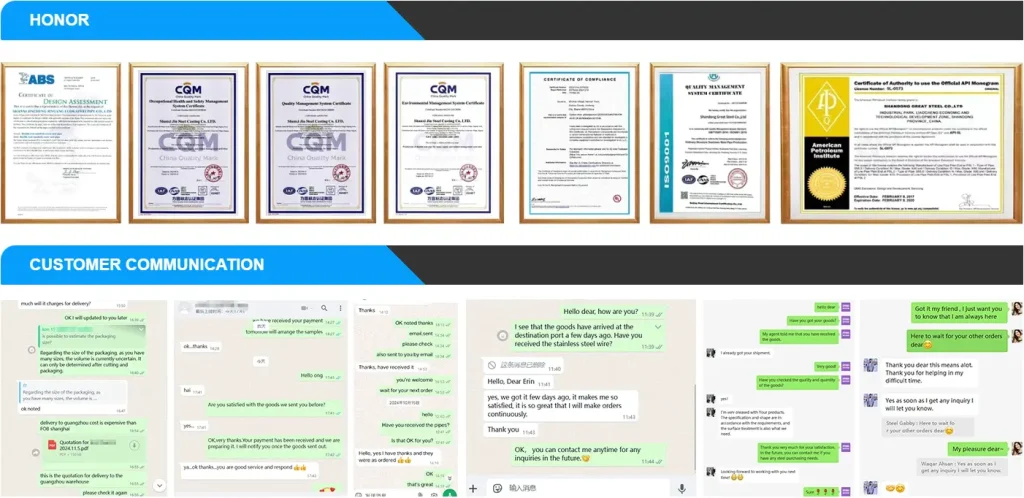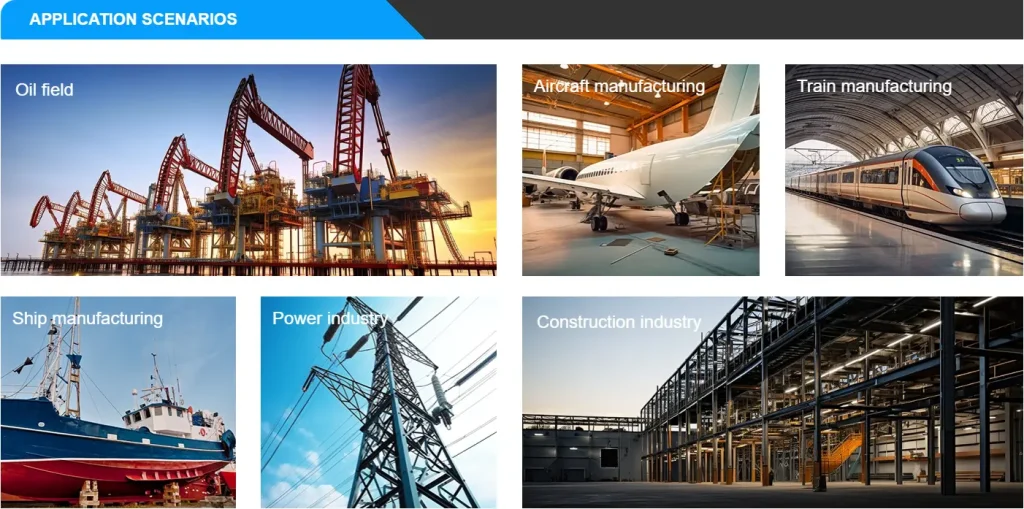Our heavy-duty manhole covers are the culmination of extensive research, development, and rigorous testing. We prioritize features that contribute to their superior strength, durability, and operational efficiency.
Superior Material Composition
The choice of material is paramount for heavy-duty applications. We primarily utilize ductile iron (GGG50/FCD500), renowned for its exceptional strength-to-weight ratio and resistance to impact. Unlike traditional cast iron, ductile iron offers significantly higher tensile strength and ductility, meaning it can deform under stress without fracturing. This characteristic is crucial in preventing sudden failures under dynamic loads. For specific applications requiring enhanced corrosion resistance or lighter weight, we also offer options in high-grade steel alloys and composite materials that incorporate advanced polymers and fiberglass. These materials are selected for their ability to withstand aggressive environments, including chemical exposure, extreme temperatures, and abrasive conditions.
Engineered for Extreme Loads
Our heavy-duty manhole covers are designed to meet stringent international load class standards, such as those defined by EN 124. This European standard classifies manhole covers based on their load-bearing capacity, ranging from A 15 (pedestrian areas) to F 900 (areas subject to exceptionally high wheel loads). We primarily focus on load classes D 400, E 600, and F 900 to cater to the most demanding environments:
-
D 400 (400 kN / 40 tons): Suitable for roadways, parking areas, and shoulders where heavy vehicles are expected.
-
E 600 (600 kN / 60 tons): Designed for areas with extremely high wheel loads, such as docks, airports, and industrial estates.
-
F 900 (900 kN / 90 tons): Reserved for areas subject to particularly high wheel loads, such as aircraft pavements and very heavy industrial applications.
Our covers undergo hydraulic press tests to confirm their ability to consistently bear these specified loads, ensuring a significant safety margin.
Anti-Skid Surface Design
Safety is a non-negotiable aspect of our product design. Each heavy-duty manhole cover features a meticulously engineered anti-skid surface pattern. This textured design maximizes friction between the cover and vehicle tires or pedestrian footwear, significantly reducing the risk of skidding, especially in wet or icy conditions. We employ various proprietary patterns, often incorporating raised studs, ribs, or checkered plates, to achieve optimal grip without compromising water drainage.
Secure Locking Mechanisms
To prevent unauthorized access, theft, and accidental dislodgement, our heavy-duty manhole covers are equipped with robust locking mechanisms. These can range from multi-point locking systems with specialized keys to bolted designs that require specific tools for removal. Some models incorporate spring-assisted or hinged designs to facilitate easier opening for maintenance crews, while still ensuring secure closure when locked. The locking systems are designed to be tamper-resistant and corrosion-proof, providing long-term security.
Integrated Sealing and Gasket Systems
To prevent the ingress of water, debris, and foul odors, our heavy-duty manhole covers often feature integrated sealing and gasket systems. These typically consist of durable elastomeric materials, such as EPDM rubber or neoprene, which create a tight seal between the frame and the cover. This not only protects the underlying infrastructure from contamination but also helps to suppress noise and vibration, contributing to a quieter urban environment.
Corrosion Resistance
Given their outdoor placement and exposure to various elements, our heavy-duty manhole covers are built with exceptional corrosion resistance. Ductile iron covers are typically coated with a durable bituminous paint or epoxy coating to prevent rust and extend their service life. For more aggressive chemical environments, we utilize specialized coatings or offer covers made from inherently corrosion-resistant materials like stainless steel or advanced composites.
Comprehensive Dimensions and Parameters
We offer a wide range of sizes and configurations to meet diverse project requirements. The following table outlines typical dimensions and parameters for our heavy-duty manhole covers. Please note that custom sizes and specifications are available upon request.
|
Parameter |
Metric (mm) |
Imperial (inches) |
Notes |
|
Clear Opening |
600 x 600 |
24 x 24 |
Standard square opening for general access. |
|
800 x 800 |
32 x 32 |
Larger square opening for greater access or specific equipment. |
|
|
Ø600 |
Ø24 |
Standard circular opening. |
|
|
Ø750 |
Ø30 |
Larger circular opening. |
|
|
Frame Outer Dim. |
750 x 750 |
30 x 30 |
For 600×600 clear opening. |
|
950 x 950 |
37 x 37 |
For 800×800 clear opening. |
|
|
Ø750 |
Ø30 |
For Ø600 clear opening. |
|
|
Ø900 |
Ø35 |
For Ø750 clear opening. |
|
|
Height of Frame |
100 – 150 |
4 – 6 |
Varies based on load class and required seating depth. |
|
Material |
Ductile Iron GGG50 / FCD500, Steel, Composite |
Ductile Iron GGG50 / FCD500, Steel, Composite |
Primary material is ductile iron; others available for specific needs. |
|
Load Class |
D 400, E 600, F 900 |
D 400, E 600, F 900 |
According to EN 124 standards. |
|
Unit Weight |
70 – 250 kg |
155 – 550 lbs |
Varies significantly based on size, material, and load class. |
|
Surface Finish |
Bituminous paint, Epoxy coating, Natural finish |
Bituminous paint, Epoxy coating, Natural finish |
Corrosion protection. |
|
Locking System |
Bolt-down, Hinge-lock, Spring-assisted |
Bolt-down, Hinge-lock, Spring-assisted |
Security features to prevent unauthorized access and dislodgement. |
|
Seal |
EPDM, Neoprene |
EPDM, Neoprene |
To prevent water and debris ingress, and reduce noise. |
|
Manufacturing Standards |
EN 124, ASTM A536, ISO 1083 |
EN 124, ASTM A536, ISO 1083 |
Adherence to international quality and performance standards. |
|
Expected Lifespan |
50+ years |
50+ years |
With proper installation and maintenance. |
Heavy-Duty vs. Other Manhole Cover Types
Understanding the distinctions between various manhole cover types is crucial for selecting the appropriate product for a given application. While our focus is on heavy-duty solutions, we recognize the importance of context.
Standard Cast Iron Covers
Standard cast iron covers are commonly used in residential areas, sidewalks, and light traffic zones (typically load classes A 15 to C 250). They are more brittle than ductile iron and thus less suitable for heavy loads. While more economical upfront, their susceptibility to cracking under stress and impact limits their use in high-traffic or industrial environments. Their weight can also make them more cumbersome for manual handling during maintenance.
Composite Manhole Covers
Composite manhole covers are gaining popularity due to their lightweight nature, corrosion resistance, and non-metallic properties, which make them less attractive for theft. They are typically made from fiberglass-reinforced polymers. While some composite covers can achieve D 400 load ratings, they may not offer the same ultimate strength and long-term durability as ductile iron in extreme F 900 applications. Their cost can also be higher than traditional iron covers. They are ideal for areas where weight is a significant concern or where metal theft is prevalent, and for utility access points where electromagnetic transparency is required.
Steel Manhole Covers
Steel manhole covers, often fabricated from mild or stainless steel, offer good strength and can be customized to specific dimensions and load requirements. They are frequently used in specialized applications, such as airports or industrial facilities, where bespoke solutions or enhanced hygiene (stainless steel) are necessary. However, steel can be susceptible to corrosion if not properly coated or if using non-stainless grades, and their weight can be comparable to ductile iron. They also tend to be more expensive due to manufacturing processes.
Our Advantage: The Ductile Iron Difference
Our commitment to heavy-duty applications largely centers on ductile iron due to its optimal balance of strength, durability, cost-effectiveness, and ease of manufacturing. It outperforms standard cast iron in terms of impact resistance and load-bearing capacity, is generally more robust than high-load composite options for the most extreme applications, and offers a more economical and readily available solution compared to specialized steel fabrications for most heavy-duty scenarios. This focus ensures that our clients receive a product that delivers maximum performance and longevity in the most demanding environments.
Global Price Comparison Table
The cost of heavy-duty manhole covers can vary significantly based on material, load class, size, quantity, and region of manufacture. The following table provides an estimated global price range (FOB – Free On Board) for our standard heavy-duty ductile iron manhole covers (D 400 load class, Ø600mm clear opening) for bulk orders, providing a general guide. Please note that these are estimates, and actual prices will depend on specific order details, shipping costs, and market fluctuations.
| Region / Manufacturer Type | Estimated Price Range (USD per unit) | Typical Characteristics |
| China / India (Bulk) | $120 – $200 | High volume production, competitive pricing, often for large infrastructure projects. Quality can vary; ensure reputable suppliers. |
| Europe (Bulk) | $250 – $450 | High-quality standards, advanced manufacturing processes, often with certifications. Premium pricing reflects quality and labor costs. |
| North America (Bulk) | $300 – $550 | Strong focus on local standards (e.g., AASHTO), robust designs, often with specific regional requirements. Higher labor and material costs. |
| Specialized / Custom | $500 – $1500+ | For unique sizes, extreme load requirements (E 600, F 900), specific locking mechanisms, or premium materials (e.g., stainless steel, advanced composites). |
It’s important to consider not just the upfront cost but also the total cost of ownership (TCO), which includes installation, maintenance, and potential replacement costs. A higher-quality, heavy-duty cover, though more expensive initially, often provides significant savings over its lifespan due to reduced need for repairs and replacements.
Frequently Asked Questions (FAQs)
Q1: What is the primary difference between ductile iron and cast iron manhole covers?
The key difference lies in their material properties. Ductile iron undergoes a special treatment with magnesium during manufacturing, which changes the graphite structure from flakes (in cast iron) to spherical nodules. This makes ductile iron much more flexible, impact-resistant, and significantly stronger in terms of tensile strength and ductility compared to cast iron, which is brittle and prone to cracking under stress. For heavy-duty applications, ductile iron’s superior strength and resistance to fracture make it the preferred choice.
Q2: How do I determine the correct load class for my project?
Determining the correct load class is critical for safety and longevity. You need to assess the type and volume of traffic the manhole cover will experience.
- A 15: Pedestrian areas, cycle paths.
- B 125: Sidewalks, pedestrian zones, light vehicle traffic.
- C 250: Curbside, car parks.
- D 400: Roadways, highways, parking areas for heavy vehicles.
- E 600: Docks, airports, industrial estates with high wheel loads.
- F 900: Aircraft pavements, extremely heavy industrial areas.
Consulting local regulations and engineering specifications is essential, and our team can assist you in making the right selection based on your specific site conditions.
Q3: Can your heavy-duty manhole covers be customized for specific dimensions or features?
Yes, absolutely. While we offer a comprehensive range of standard sizes and configurations, we understand that many projects have unique requirements. We provide customization options for dimensions, load classes, specific locking mechanisms, branding, and even specialized coatings for particular environmental conditions. Our engineering team works closely with clients to design and manufacture covers that precisely meet their bespoke needs.
Q4: What is the expected lifespan of a heavy-duty ductile iron manhole cover?
With proper installation, appropriate load class selection, and minimal maintenance, our heavy-duty ductile iron manhole covers are designed to last for 50 years or more. Factors influencing lifespan include traffic intensity, environmental conditions (e.g., exposure to corrosive chemicals), and adherence to maintenance schedules. Their inherent durability and corrosion-resistant coatings contribute significantly to their extended service life, making them a long-term, cost-effective investment.
Q5: How do your products meet international quality and safety standards?
We adhere to stringent international quality and safety standards throughout our manufacturing process. Our heavy-duty manhole covers are designed and tested to comply with standards such as EN 124 (European Standard for gully tops and manhole covers for vehicular and pedestrian areas), ASTM A536 (Standard Specification for Ductile Iron Castings), and ISO 1083 (Ductile Iron). We implement rigorous quality control procedures, including material testing, load-bearing tests, and dimensional checks, to ensure that every product leaving our facility meets the highest benchmarks for performance, durability, and safety.







